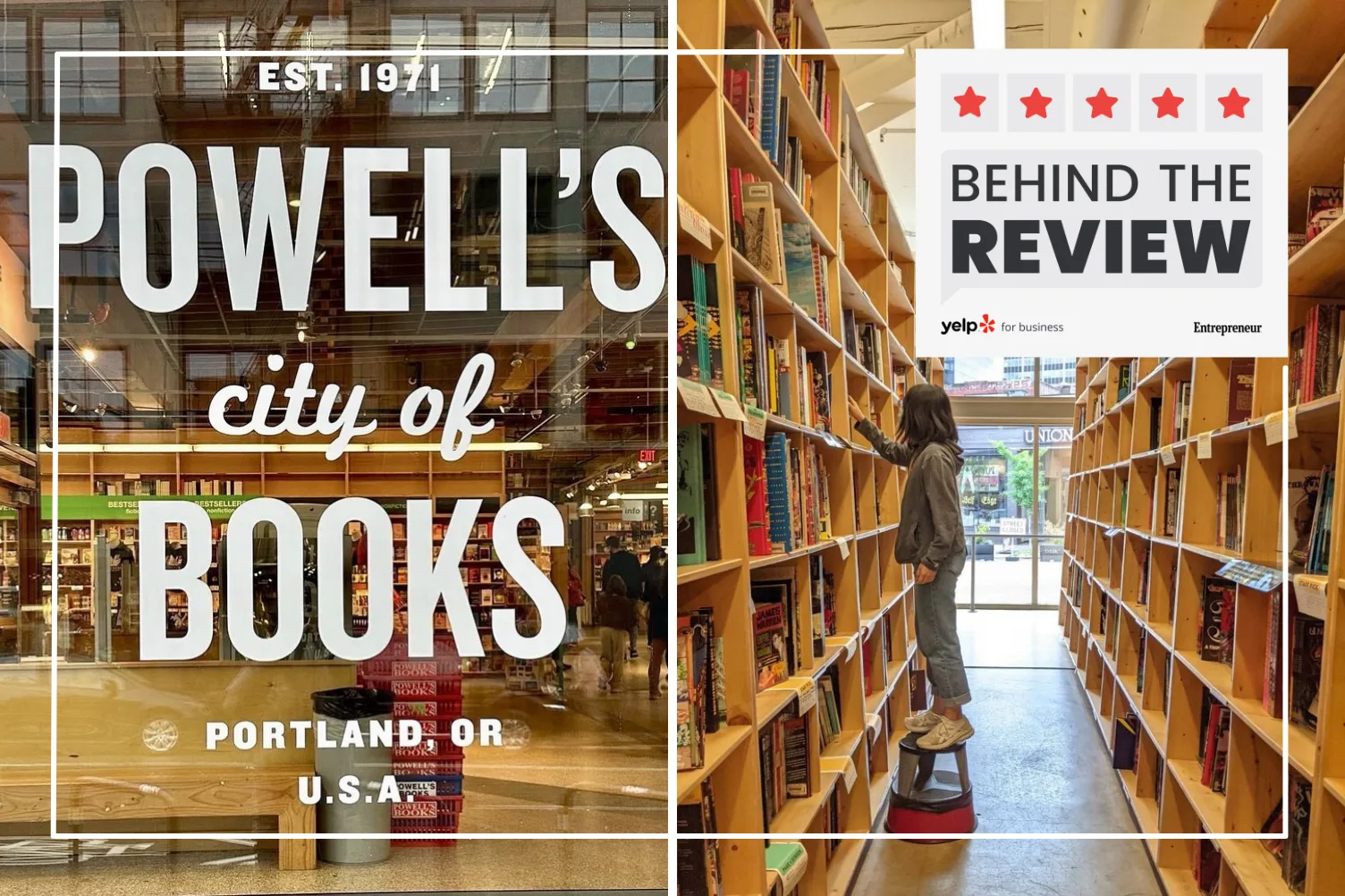5 operational tips that keep one of the world’s largest independent bookstores running smoothly

Powell’s City of Books—spanning an entire city block and housing approximately one million books—more than lives up to its name. Of the store’s 4,600+ Yelp reviews, more than 700 mention getting lost in its three floors of used and new books. “ I could purposefully get lost in here every time I visit,” Yelp reviewer Chelsea G. said.
But behind the scenes, Powell’s is a well-oiled machine. Founded in 1971, the bookstore remains one of the largest independent bookstores in the world and has even expanded to three locations in the Portland, Oregon area.
In order to create the immersive experience that’s become a destination for tourists and locals alike, Powell’s has streamlined signage, organization, and customer service—all so customers can focus on what really matters. “The ultimate destination is the one you find in the book that you’re reading,” store manager Bry Hoeg said.
Over the years, Bry and her predecessors developed methods for organizing the store’s 6,000 feet of retail without spoiling the magic for its customers. While not all businesses can follow Powell’s model to a tee, many of these insights can be applied to any retail store or brick and mortar. Below, Bryanne shares five unique operational tips that keep the city running.
1. Shelve new and old products side by side
[Our founders Walter and Michael Powell] believe that new and used books should be shelved side by side. At most bookstores [that] sell used books, they [typically] keep those in a separate area. [Powell’s] revolutionized the idea of a new and used product being shelved and offered together, so that the customers can make a choice.
We really believe in customers having the opportunity to make a choice in what they want and how much it costs. We value being able to offer books at different price points so that customers can fit what works best for them.
2. Color-code rooms to make directions simple

Each room is a certain color. In our store, it’s because we want to make sure that people can navigate the store easily and get around. So we can say, “Oh, that’s in the blue room, which is where literature is,” or “Bathrooms are in the purple room up on the second floor.” It’s a directional and navigational choice that makes things easier.
3. Divide the team by genre and expertise
We help our employees focus on the part of the store they work in so that they can feel more confident in knowing more about that area of the store versus having to maintain overall knowledge of everything. It is definitely a relief to know I only have to think about fiction and genre fiction versus everything in the store.
We have more than 600,000 books in our inventory at any given time—sometimes as much as a million—so we really want to make sure that things are easy for customers and employees alike so they can focus on enjoying the experience of being here.
4. Buy and process used product onsite
Each retail location has a used book buying table that’s open three days a week, Friday through Sunday, from 10 a.m. to 5 p.m. Any customer can bring in any amount of books they want, and we will make an offer on those books in exchange for store credit.
At [the Portland] store, our book-buying manager has been here for 30 years. He really knows books and he trains and teaches people [in all] aspects of buying books, so they’re very quick. One session of selling 100 books [takes] maybe less than 15 minutes. And they can put over half of that straight into circulation to be available for purchase that day.
5. Encourage employees to share their passion
Most of our employees are equally as passionate about bookselling as I am. We really want people to read more… [It] defines us as employees. We purely believe in active reading as being transformative and hopeful.
We pride ourselves on providing the same level of service and experience to people who are just browsing as we do to the people we know are also purchasing. That frees us up to have natural engagement with our customers and allows us to lean into our own personal love of reading and books.
These lessons come from an episode of Behind the Review, Yelp & Entrepreneur Media’s weekly podcast. Listen below to hear from Bry, or visit the show homepage to learn about the show and find more episodes.